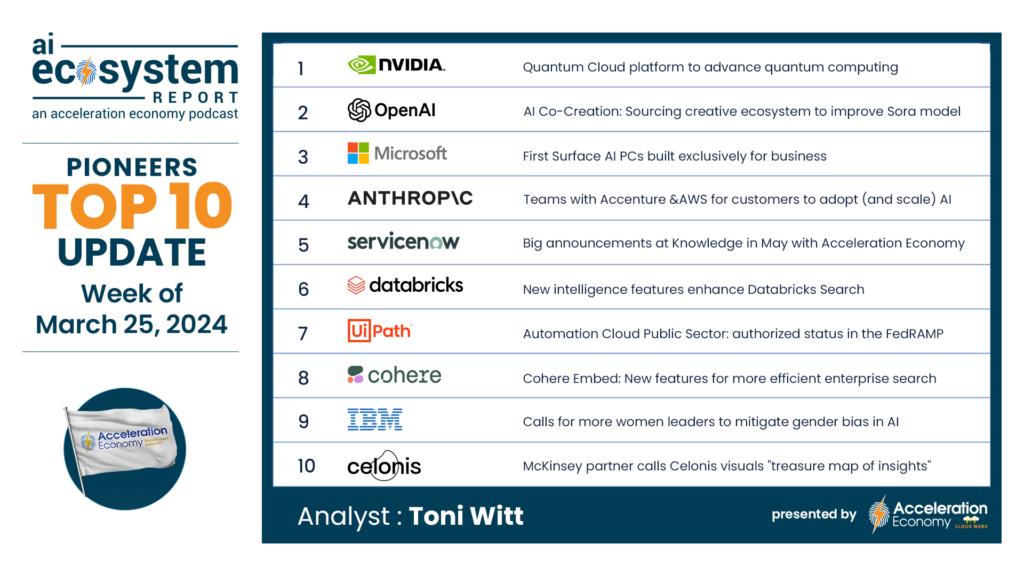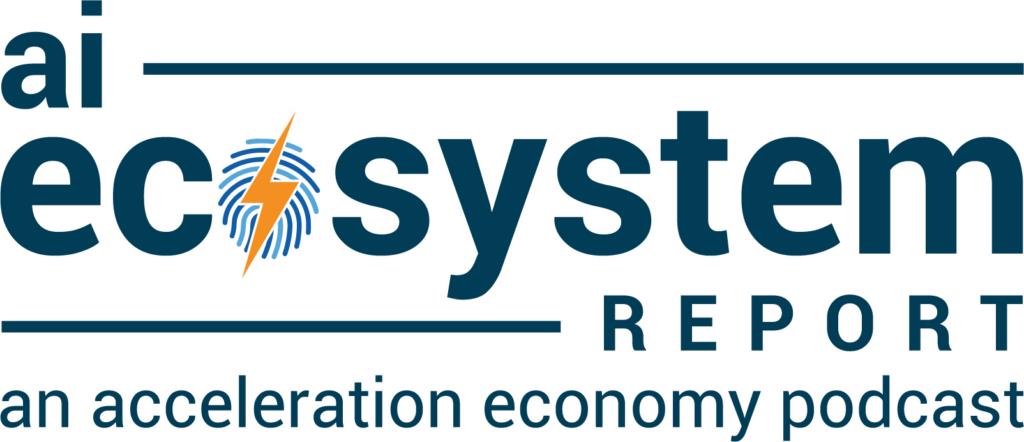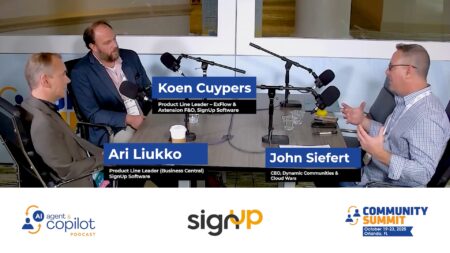Welcome to the AI Ecosystem Report, featuring practitioner analyst and entrepreneur Toni Witt. This series is intended to deliver the timely intelligence about artificial intelligence (AI) you need to get up to speed for an upcoming client engagement or board meeting.

Highlights
Innovation (00:39)

Bayer is applying AI to agriculture, specifically in the processes of selective breeding to grow crops. The company is exploring the potential of machine learning to identify which gene sequences and which seeds lead to the best characteristics in the plant. This can increase the economic output of an average plot of farming land.
Applying AI to this process minimizes the amount of testing required per gene sequence to determine the outcome of each plant. Farmers will be able to access seeds that they want and know will last longer, grow stronger, and increase the output of their farmland.
Bayer’s VP and head of data science for global plant breeding, Phani Chavali, pointed out that the company has saved about 20,000 acres of farmland in testing fields alone since using this technology. With an ever-increasing population and a diminishing supply of clean water, nitrogen, and land, we must continue using technologies, like machine learning and AI, to increase the output of farmland and crops.
Funding (03:02)

Spacely AI built a GenAI-powered platform for interior architecture design. The Thailand-based startup raised its first funding round from SCB 10X. It has some enterprise offerings available now as APIs:
- Instant Rendering API: enables users to quickly visualize interior design concepts as they would appear in 3D; this helps with the early stages of the design process.
- Smart Recommendation API: matches your products within the customer design space based on their preferences, budget, and space.
- Visualization API: provides mockups of how a product would look within a space.
- Precision Space Planning API: gives detailed measurements of the space.
These tools are intended to empower the human designer, or architect in this case, and streamline the design process, from ideation to provisioning. GenAI hasn’t touched the 3D area too much yet, so it’s exciting to see developments in generating 3D models.
Solution of the Week (04:58)

Groq has had strong tailwinds in building a new class of specialized computing hardware, made specifically for large language models (LLMs). Its developments are delivering results faster than other LLM applications, which have been in high demand.
Groq’s offerings have a few key use cases; its versatility is valuable. The company built a new kind of processor that’s custom-built for running LLMs called language processing units (LPUs). These can generate responses up to 10x faster than on a standard GPU. However, Groq hasn’t developed its own models yet, so there is still a lot of opportunity ahead for the company to combine its own hardware and models, being custom-built together.
Ask Cloud Wars AI Agent about this analysis











